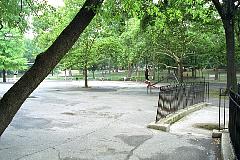 We entered Central Park on 7th avenue, crossing Central Park South,
and headed a short distance north.
This is Heckscher playground. Central Park was the first landscaped
public park in the United States. In 1853 the
state legislature authorized the City of New York to use the power of eminent domain to
acquire more than 700 acres of land in the center of Manhattan.
The extension of the
boundaries to 110th Street in 1863 brought the park to its current 843 acres.
We entered Central Park on 7th avenue, crossing Central Park South,
and headed a short distance north.
This is Heckscher playground. Central Park was the first landscaped
public park in the United States. In 1853 the
state legislature authorized the City of New York to use the power of eminent domain to
acquire more than 700 acres of land in the center of Manhattan.
The extension of the
boundaries to 110th Street in 1863 brought the park to its current 843 acres.
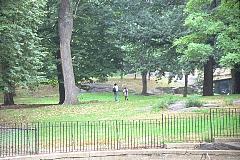 The thing that surprised me was the undeveloped, primeval atmosphere of
the park. But that was not quite correct. The landscape that became Central Park
was originally an irregular terrain of swamps and bluffs.
Some 20,000 workers--Yankee engineers, Irish laborers, German
gardeners, and native-born stonecutters--reshaped the site's topography to create the pastoral
landscape. After blasting out rocky ridges with more gunpowder than was later fired at the
Battle of Gettysburg, workers moved nearly 3 million cubic yards of soil and planted more
than 270,000 trees and shrubs.
The thing that surprised me was the undeveloped, primeval atmosphere of
the park. But that was not quite correct. The landscape that became Central Park
was originally an irregular terrain of swamps and bluffs.
Some 20,000 workers--Yankee engineers, Irish laborers, German
gardeners, and native-born stonecutters--reshaped the site's topography to create the pastoral
landscape. After blasting out rocky ridges with more gunpowder than was later fired at the
Battle of Gettysburg, workers moved nearly 3 million cubic yards of soil and planted more
than 270,000 trees and shrubs.
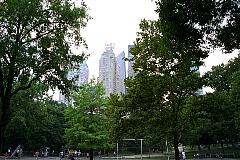 Creating the park required
displacing roughly 1,600 poor residents,
including Irish pig farmers and German gardeners, who lived in shanties on the site.
Creating the park required
displacing roughly 1,600 poor residents,
including Irish pig farmers and German gardeners, who lived in shanties on the site.
I always hear on the TV show Saturday Night Live that guests "Stay at the Essex House". Well, it's visible from Central Park and here it is. Central Park seems like a tall rectangular cement basin filled with lush vegetation.
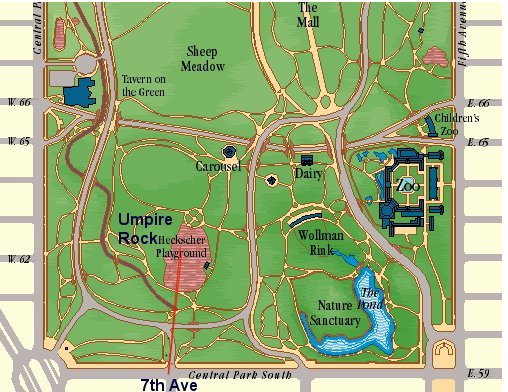 The red line shows approximately our progress so far.
The red line shows approximately our progress so far.
In the early twentieth century, with the emergence of immigrant neighborhoods at the park's borders, attendance reached its all time high. Progressive reformers joined many working-class New Yorkers in advocating the introduction of facilities for active recreation. In 1927, August Heckscher donated the first equipped playground.
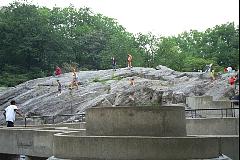 Here is Umpire Rock. Children find it irristable.
Here is Umpire Rock. Children find it irristable.
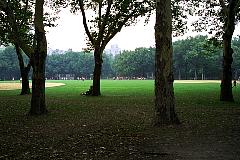 There were ball games going on at all the ball fields.
There were ball games going on at all the ball fields.
 More rock formations.
More rock formations.
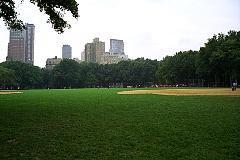 I wonder if the people in the tall buildings ever get bored enough to watch the games.
I wonder if the people in the tall buildings ever get bored enough to watch the games.
 As the sign says, this is playmates arch. Note the horse carriage crossing the
bridge.
As the sign says, this is playmates arch. Note the horse carriage crossing the
bridge.
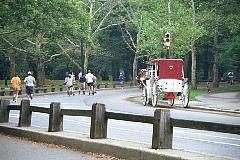 Bikers, runners, rollerbladers, walkers, and horse carriages all share the
larger roadways.
Bikers, runners, rollerbladers, walkers, and horse carriages all share the
larger roadways.